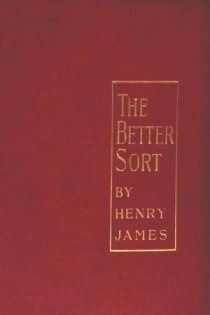|
The Beast in the Jungle
The Beast in the Jungle is a 1903 novella by Henry James, first published as part of the collection The Better Sort. Almost universally considered one of James' finest short narratives, this story treats appropriately universal themes: loneliness, fate, love and death. The parable of John Marcher and his peculiar destiny has spoken to many readers who have speculated on the worth and meaning of human life. Plot summaryJohn Marcher is reacquainted with May Bartram, a woman he knew ten years earlier while living in southern Italy, who remembers his odd secret: Marcher is seized with the belief that his life is to be defined by some catastrophic or spectacular event, lying in wait for him like a "beast in the jungle". May decides to buy a house in London with the money she inherited from a great aunt, and to spend her days with Marcher, curiously awaiting what fate has in store for him. Marcher is a hopeless fatalist, who believes that he is precluded from marrying so that he does not subject his wife to his "spectacular fate". He takes May to the theater and invites her to an occasional dinner, but does not allow her to get close to him. As he sits idly by and allows the best years of his life to pass, he takes May down as well, until the denouement where he learns that the great misfortune of his life was to throw it away, and to ignore the love of a good woman, based upon his preposterous sense of foreboding. Major themesMarcher may appear so eccentric and unrealistic in his obsession that his fate could seem irrelevant and unconvincing. However, many critics and ordinary readers have found that his tragedy only dramatizes, with heightened effect, a common longing for an exalting experience that will redeem a humdrum existence, although most individuals will not endure anything like Marcher's final revelation at May's graveside. The story has been read as a confession or parable about James' own life. He never married and possibly never experienced a consummated sexual relationship. Although he did enjoy a thorough experience of aesthetic creativity, it is possible that he still regretted what he called the "essential loneliness" of his life. This biographical relevance adds another level of meaning to "The Beast in the Jungle". Critical evaluationJames placed "The Beast in the Jungle" at the head of volume 17 of the New York Edition (1907–1909) of his fiction, along with another insightful examination of life and death, "The Altar of the Dead." Critics have almost unanimously agreed with the author's own high opinion of the tale, with some going so far as to put the story among the best short narratives in any literature. Critics have appreciated James' flash of insight in conceiving "the man to whom nothing on earth was to have happened." They have also praised the tale's technique. Beginning in a neutral and rather diffident manner, the story builds to a climax of great power. Many critics have singled out the final paragraph for its intensity and rhetorical impact. In particular, the final sentence ends the tale with a succession of short (for James) but telling phrases:
Cultural referencesFilm
Literature
Television
Music
ReferencesWikisource has original text related to this article:
External links
|
||||||||||||||||
